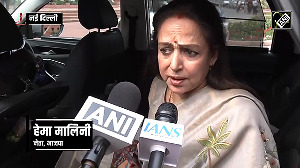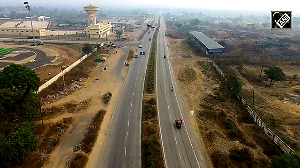Wiping out revenue deficit by 2008-09 will be a tough order while continuing forex inflows could create macro-economic problems, Economic Affairs secretary Rakesh Mohan cautioned on Thursday while putting up a strong case for continuance of reforms to attain a higher growth.
Although inflation expectation has come down to 4-5 per cent from 7 per cent a few years ago, Mohan indicated that there was no reason to be complacent as long as global oil prices are hovering at a high of $50.
Justifying the Budget proposals on tax reforms, he said tax-GDP ratio has to go up for revenue deficit and fiscal deficit to come down.
With Fiscal Responsibility and Budget Management, revenue deficit has to come down to zero by 2008-09. It is a tough order, Mohan said at the India Trade and Investment Forum organised by Confederation of Indian Industry.
The task was all the more difficult, as Centre has to increase the devolution of taxes to states offered debt relief and increased grants as per the recommendation of 12th Finance Commission.
Revenue deficit, which was a meager 2.5 per cent in 1996-97, started rising since then and peaked to 4.4 per cent of GDP in 2001-02, has been estimated at 2.7 per cent for 2004 -05 and 2005-06.
Fiscal deficit also has to come down to 3 per cent of GDP by 2008-09, he said, adding, "We are on track. Fiscal deficit was 6.4-6.5 per cent during 1993-94 but is estimated at 4.5 per cent this fiscal and 4.3 per cent in 2005-06."
With reduction in Centre's deficit and more number of states enacting FRBM legislations, Mohan said, "government's borrowing will come down."
To ensure reduction in revenue and fiscal deficits, Mohan said the tax:GDP ratio has to go up. "tax:GDP ratio has increased by 1.6 per cent to 9.8 per cent in 2004-05."
Next fiscal, tax-GDP ratio has to cross the double-digit mark, he said adding that income tax-GDP ratio was estimated at 1.9 per cent and Corporate Tax-GDP ratio was slated to go upto 3.18 per cent in 2005-06.
He said the government will continue with the tax reforms especially in the areas of income and corporate taxes while reducing customs duties and excise duties.
The buoyancy in tax collection could come as a result of high growth in manufacturing sector and the economy as a whole. Manufacturing sector is expected to grow by 9 per cent, he said.
Appreciating India Inc for going through the "pain" of high interest rate regime and increasing competition in the last few years, he said, "now the financial structure of companies are much better than what it was 15 years ago."
Exports have also increased despite fall in tariff rates and appreciation in rupee against the US dollar, while forex reserves is now at over $135 billion.






 © 2025
© 2025